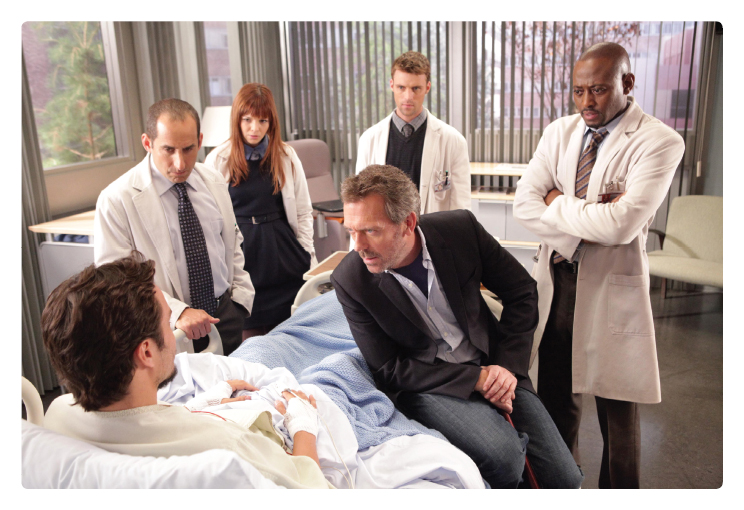How Small Groups Communicate
Groups achieve their stated goals when members communicate in a cooperative and productive fashion. You can help the group build and maintain positive relationships by understanding how group roles work and adapting your communication to foster group unity.
If you look beyond the romantic scandals and friendship betrayals in most televised medical dramas—such as House or Grey’s Anatomy—you can gain important insights as to how medical teams work. Doctors are the leaders who direct nurses, anesthesiologists, and lab technicians in emergency and operating rooms. Although there is a clear chain of command, everyone still communicates as a team, with nurses and technicians performing tasks and giving opinions. With everyone pitching in, the groups on these shows always seem to catch potential errors or find the correct diagnosis right in time.

But in real life, these groups communicate in much more complicated ways—and the consequences are more severe. If medical teams fail to clearly communicate, they risk making errors that can hurt patients (Healy, 2008). Consider this case: A patient in Tampa, Florida, went to the hospital for a routine stomach test. Instead, he was wrongly prepped for a cardiac catheterization, a complex procedure that involves inserting a thin tube into the groin, threading it to the heart, and then injecting dye so a cardiologist can look for potentially life-threatening blockages.1 Shortly after the procedure started, a surgical team member realized the error and spoke up, preventing the mistake from going any further. But what if that person hadn’t said anything? Though rare, these types of mix-ups do happen in hospitals. One study of medical errors in Colorado found that miscommunication—from surgeons or support staff—was the primary cause of such mistakes (Gardner, 2010).
When communication breaks down in a small group, problems can occur. Even in a technically skilled medical team, success or failure is largely attributable to how members communicate with one another. Within any small group, members can set the stage for competent communication—and their own success—in five ways: balance group roles, build cohesiveness, establish positive norms, share leadership responsibilities, and manage physical space.